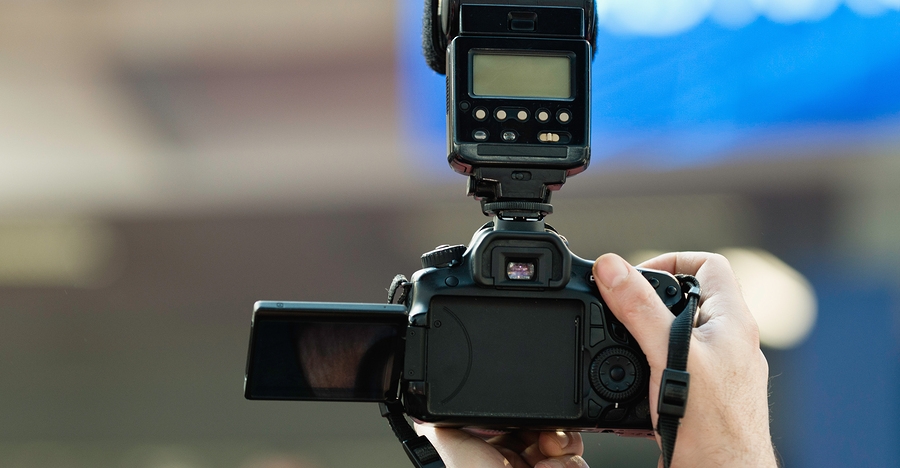I know a couple of photography enthusiasts (professionals, even) who think some of these should NEVER be used.
Personally I think all of these can look awesome, if they are used correctly. That’s what was great about this article over at Popular Photography – they don’t just tell you what you’re doing wrong but they give you tips on how you can make it work.
SHARPENING
What is it? In a simplified way, sharpening looks for the edges of objects in a photo and tries to make them crisper and more pronounced to make the image looks, well, sharper.
How much is too much? Adding too much sharpening to a photo can create very awkward-looking lines anywhere there’s a high-contrast edge in a photograph. You can also introduce a lot of very unsightly artifacts into the image if you crank the sharpening up too far. If your images start to look overly grainy or the subject starts to get odd halos around the edges, then it’s too much.
How to use it responsibly: We all strive to make “sharp” images, so the temptation to really crank the sharpness slider is strong. A strategy I find pretty effective with many of these editing techniques is to add too much sharpening intentionally and then walk it back. You want your image to have clearly defined edges without getting at all cartoony or littered with ugly little artifacts. Photoshop’s relatively new Smart Sharpening filter is also pretty good about letting you apply a reasonable amount of sharpening without the downsides.
It’s also important to note that it’s very, very hard to use sharpening to “fix” an image that’s out of focus or suffering from motion blur. It typically just makes things worse. In the photo of the chicken above, the original was soft due to motion blur and you can see the sharpening doesn’t “fix” the blur, but rather makes it look odd.
LENS FLARE
What is it? A bright light source in the frame of the photo sends refracted and reflected light scattering throughout the lens, creating interesting objects and noticeable haze.
How much is too much? This is perhaps the one I struggle with the most. I’m a sucker for lens flare to the point where I have to keep myself in check. There are some specific things to look out for, though. Some lenses flare in a much more attractive way than others. Smartphone cameras, for instance, often have an ugly purple flare. You’re always going to lose contrast when you introduce lens flare, but losing too much can take important details out of your image. Since this is popular with portrait photographers, it’s also important to use it sparingly throughout a session. The subject might love the stylized lens flare photos you provide, but they also would likely prefer some photos where you can actually see what they look like.
How to use it responsibly: If you have to work really hard to get your lens to flare, it’s likely the conditions aren’t really conducive to it. Rather than getting a dreamy haze, you’re going to get a flat, washed-out image that looks more like a mistake than a creative choice.
While the little reflections can look really cool in the frame, they can also fight with your subject, so take careful note of where the flare is showing up. It doesn’t need to be on top of someone’s face to ruin a photo, either. A big green or purple artifact can be very distracting in many circumstances.
HDR
What is it? Combining several images of the same scene with different exposures gives the impression that the camera had the ability to capture things outside of its normal dynamic range.
How much is too much? This is the granddaddy of overused photographic techniques. A quick search on Flickr for HDR will turn up tone-mapped, neon monstrosities that are almost painful to look at. I once heard bad HDR described as making everything “look like World of Warcraft” and that seems like a pretty good description.
How to use it responsibly: If you love the neon-colored HDR, then more power to you, but the real power of HDR starts to show when it’s done subtly. You can make a scene look more like it did in real life, bringing back detail in shadows and highlights that might otherwise be lost.
SUPER SHALLOW DEPTH OF FIELD
What is it? The function of lenses with wide apertures combined with a larger sensor, shallow depth of field involves a small piece of the photo being in focus with the rest dropping off into pretty blur.
How much is too much? If the lens goes to f/1.4, the urge is often strong to shoot at f/1.4. You paid for that extra aperture, right? So it would be a shame not to use it. However, all that beautiful bokeh can obscure the fact that important parts of your subject aren’t in the plane of focus. Nailing the focus on the front eye of a subject at f/1.4 can look dreamy and great, but for a normal headshot the effect can be too stylized. It’s also worth noting that lenses are typically less sharp overall when shooting wide open.
How to use it responsibly: Feel free to crank up the bokeh, but it’s important to consider your subject. If there’s beautiful blur in the background, it’s not going to matter if the thing you’re actually taking a picture of is an out-of-focus mess. Shooting at a more narrow aperture for more depth of field will also make you pay closer attention to your backgrounds, which you should be doing anyway.

